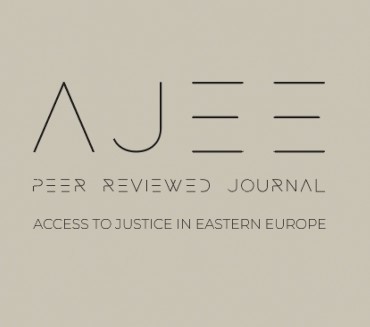1. Introduction. – 2. Literature Review. – 3. Methodology. – 4. The Nature of Compensation for Victims of Enforced Disappearance and its Forms. – 4.1. The Concept of Compensation for the Crime of Enforced Disappearance. – 4.2. Persons Entitled to Compensation. – 4.2.1. The Disappeared Person as a Direct Victim of Enforced Disappearance. – 4.2.2. The Indirect Victim of Enforced Disappearance. – 4.3. Forms of Compensation for Harm from the Crime of Enforced Disappearance. – 4.3.1. Restitution. – 4.3.2. Financial Compensation. – 4.3.3. Rehabilitation. – 4.3.4. Satisfaction. – 4.3.5. Non-repetition. – 5. Legal Regulations of Compensation for Enforced Disappearance in the UAE Compared to Other National Legislations. – 6. Compensation for Crimes of Enforced Disappearance in International Court Rulings. – 6.1. Applications of the Inter-American Court of Human Rights. – 6.2. Applications of the European Court of Human Rights. – 7. Conclusions.
Background:
The crime of enforced disappearance is one of the most serious human rights violations, as it causes severe suffering to victims and their families. This crime involves depriving a person of their freedom and fundamental rights in secret, without any official recognition, leaving victims living in a constant state of isolation and anxiety. Addressing this crime has become not only a legal obligation but also a moral obligation for states and the international community to protect victims and ensure justice. Modern criminal policies attach special importance to victims of the crime, not only by punishing the perpetrator but also by seeking to achieve justice through fair compensation for victims and their families. This approach is reflected in international and national legislation and the trends of international human rights courts. The importance of this study lies in analysing the legal framework for compensation for crimes of enforced disappearance from a comparative perspective between international law, UAE legislation and other comparative legislation, with the aim of assessing the adequacy of these laws in protecting victims and ensuring their compensation.
Methods:
This study uses descriptive, analytical, and comparative methods to define compensation for enforced disappearance crimes, identify eligible recipients, and explore various compensation forms. Additionally, it analyses international court rulings on compensation for the crime of enforced disappearance, examines relevant provisions in Emirati law, and compares these with corresponding legal frameworks from other jurisdictions. The comparison of the legislations of Spain, the Philippines, Yemen, Qatar, and Venezuela with that of the UAE highlights the progress and gaps in the UAE's approach to compensating victims of enforced disappearance crimes. This method provides a legal model that the UAE legislator can benefit from in developing and expanding the legal foundations for compensation for the aforementioned crimes.
Results and Conclusions:
The research concluded with several findings, the most significant being the insufficiency of current Emirati legislation to comprehensively compensate victims of enforced disappearance, unlike other comparative legislations. Human rights courts, such as the Inter-American and European Courts of Human Rights, have played a crucial role in establishing principles related to comprehensive compensation for enforced disappearance crimes. The study recommends removing the statute of limitations on compensation claims, allowing victims or their families to seek justice regardless of when the crime occurred. It also suggests benefiting from international judicial trends and successful global experiences in drafting national punitive legislation related to the criminalisation of enforced disappearance.

